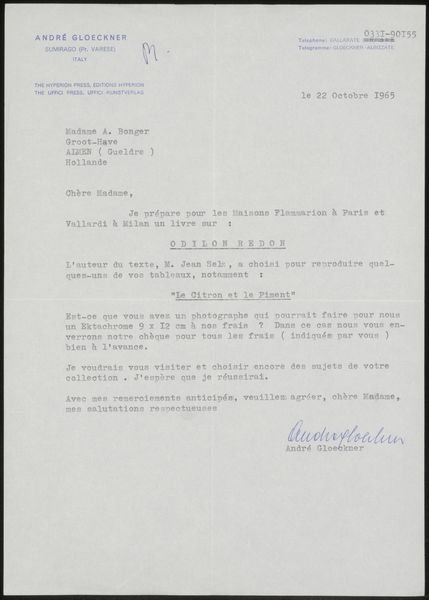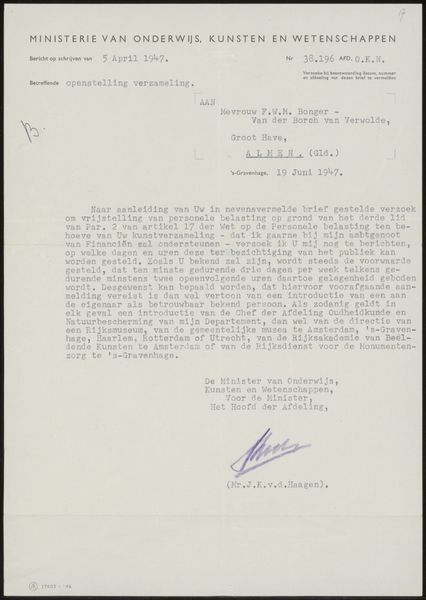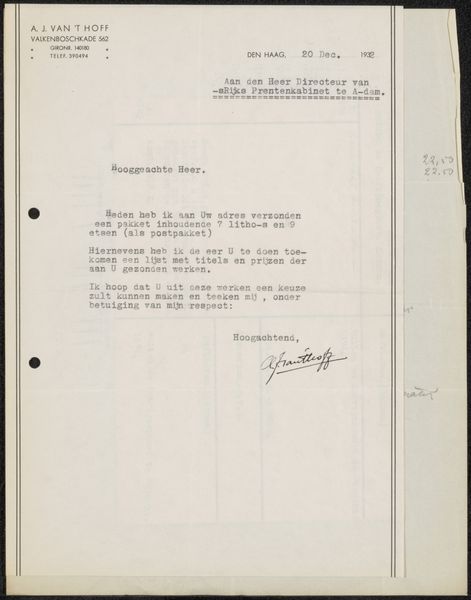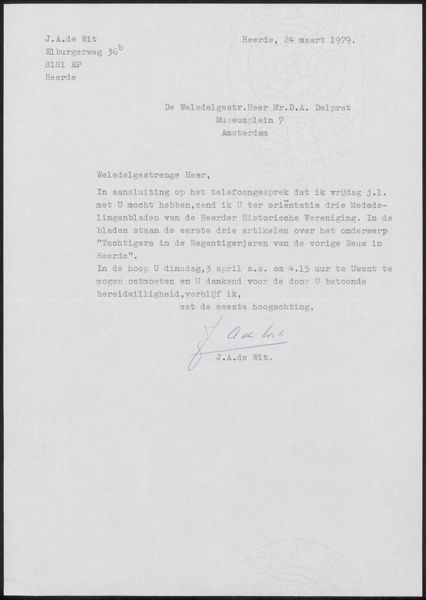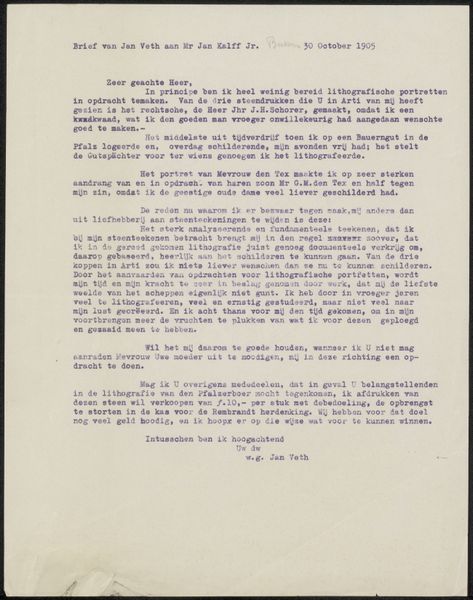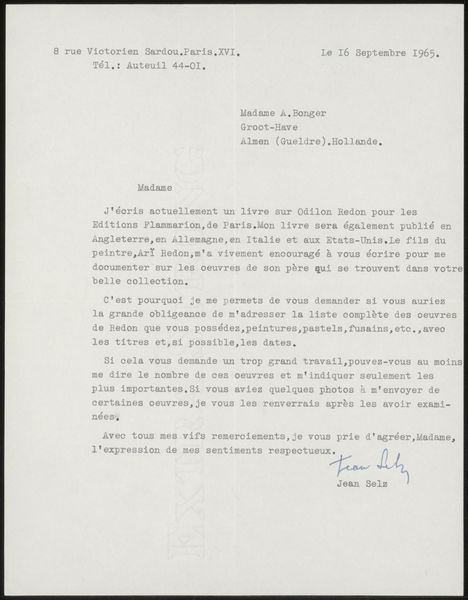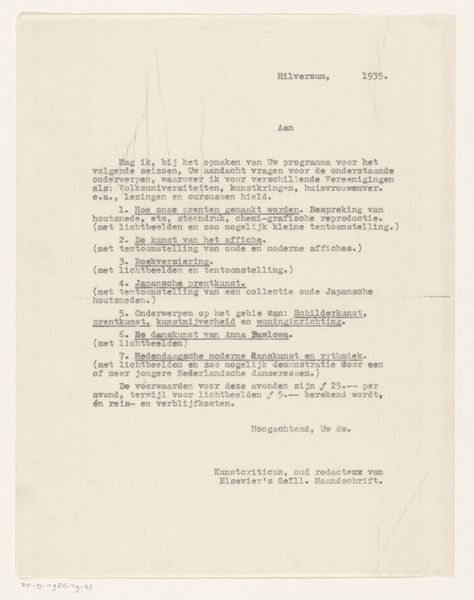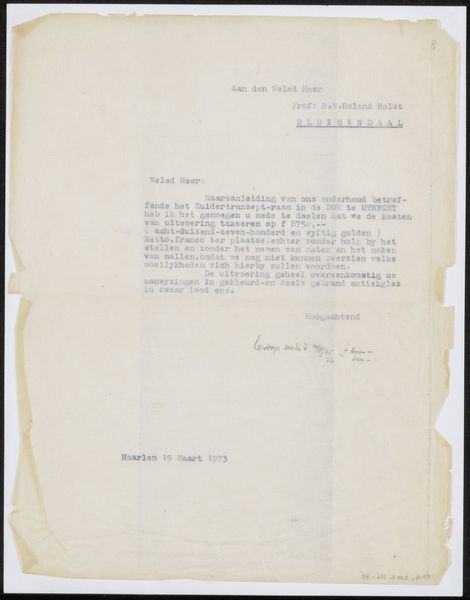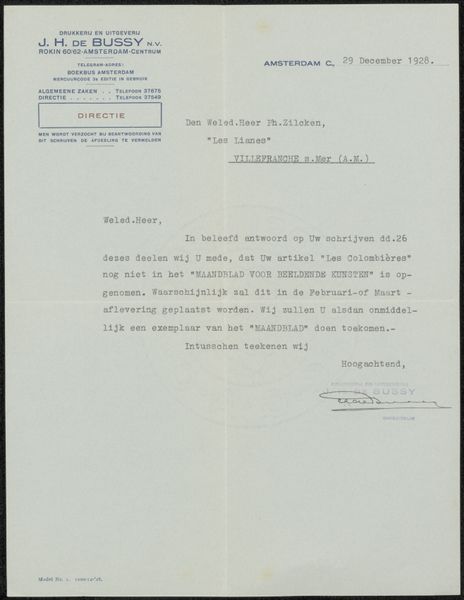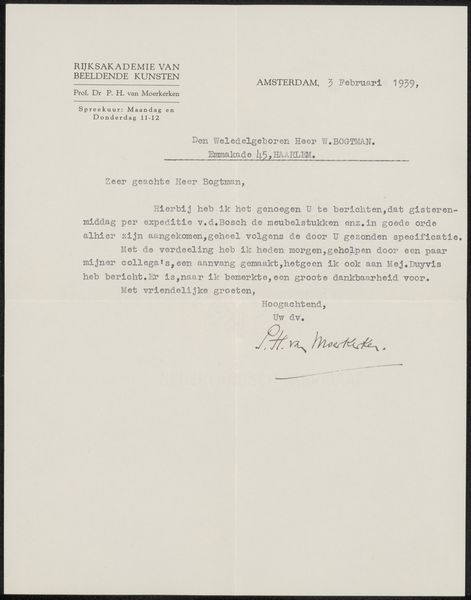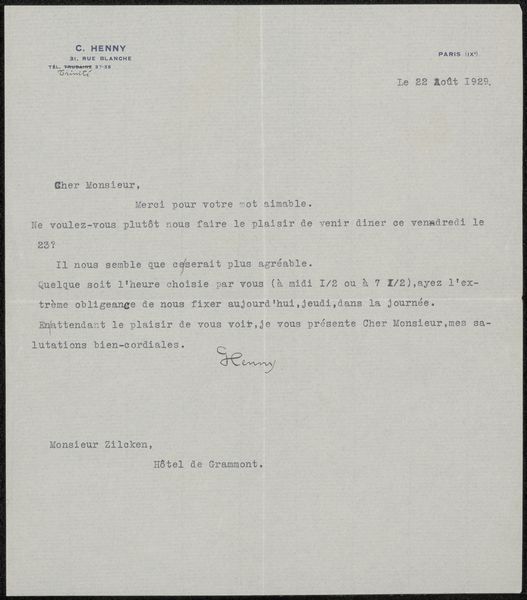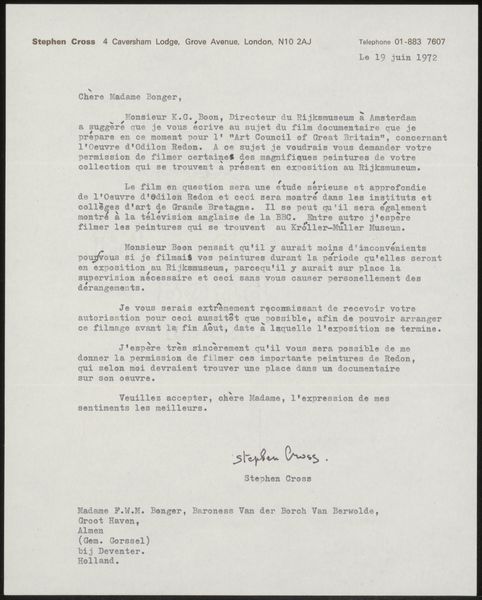
Brief van Mr. F. van der Valk aan Dr. W. Drees, 7 september 1950 Possibly 1950 - 1959
0:00
0:00
drawing, paper, photography, ink
#
script typeface
#
drawing
#
white text
#
old engraving style
#
hand drawn type
#
paper
#
photography
#
ink
#
fading type
Dimensions: height 29.3 cm, width 20.7 cm
Copyright: Rijks Museum: Open Domain
Curator: What we're looking at is a photograph of a letter, "Brief van Mr. F. van der Valk aan Dr. W. Drees, 7 september 1950". It's an official document, seemingly related to affairs between the Netherlands and overseas territories, authored by F.E.J. van der Valk. Editor: My initial response is a quiet unease. The faded ink and old typeface create a sense of institutional power and perhaps the uncomfortable legacies of colonialism. The composition, so centered on bureaucratic language, amplifies this sterile mood. Curator: Right, and notice the materiality here. It's ink on paper—a very deliberate choice for official correspondence of the time. The typewritten text suggests a bureaucratic process, where each document likely went through multiple hands and revisions, signifying its importance within that structure. The photograph flattens it into art, somewhat. Editor: That's a crucial point. I am immediately drawn to the tension between the rigid typography and the hand-written additions. Look at the corrections scrawled in, the signature at the bottom. These break the clean lines and point toward human agency and intervention. Curator: Exactly, it betrays the labour involved and moves beyond mere mechanical reproduction. The imperfections in the photograph also play a part – it isn't a pristine record, which brings the story into the contemporary, mediated experience of art. These 'blemishes' become part of its new construction, beyond its original societal function as means for delegation and enforcement. Editor: It’s as if these small imperfections create a rupture, almost revealing something of the tension embedded within its history, and how these kinds of colonial mechanisms are recalled, reflected on, and renegotiated over time. This act of making copies for Indonesia, ensuring exact replications, almost has an insidious aspect about it; as though solidifying power through simulacrum. Curator: A sinister shadow, yes, in its bureaucratic control and duplication. Editor: The interplay between surface and history has made me rethink that initial sterile reading. I'm left considering the social contexts embedded in seemingly innocuous paperwork and how these details subtly reveal narratives of power. Curator: For me, focusing on its production highlights the intricate systems used for managing empires, as the consumption of such paperwork becomes acts of dominance in and of itself.
Comments
No comments
Be the first to comment and join the conversation on the ultimate creative platform.
